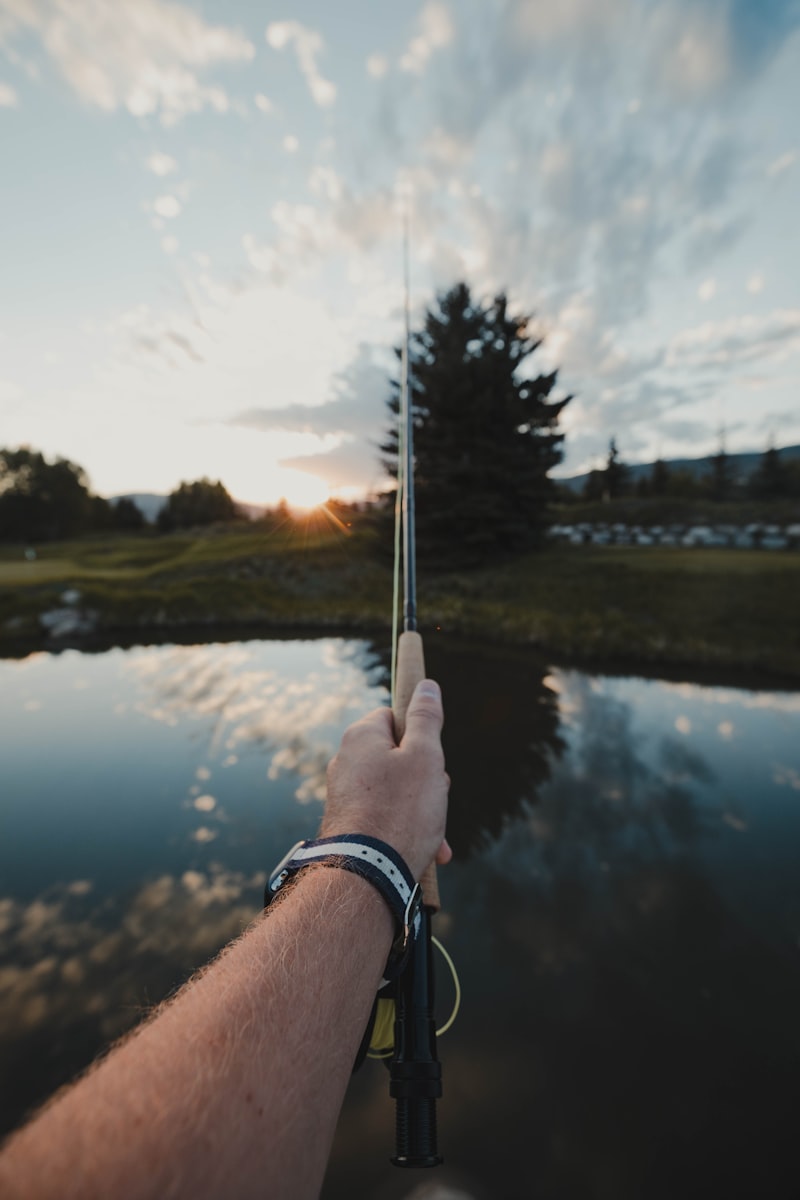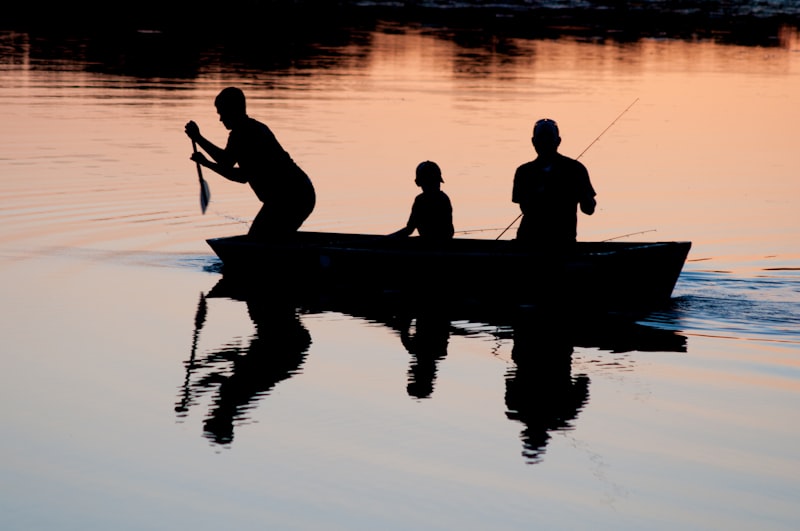Firstly, it’s about respecting fishing regulations and guidelines set by authorities to prevent overfishing. These rules help maintain fish populations at healthy levels, allowing them to reproduce and thrive naturally. By adhering to catch limits and seasons, fishermen play a vital role in preserving the balance of marine life.
Moreover, responsible fishing involves using selective gear that minimizes bycatch. Bycatch refers to unintentionally catching non-target species like dolphins, sea turtles, or seabirds. Modern fishing techniques such as circle hooks or turtle excluder devices (TEDs) help reduce this collateral damage, ensuring that only the intended catch is harvested.
Another aspect of responsible fishing is promoting sustainable seafood choices among consumers. Choosing seafood certified by reputable sustainability labels like MSC (Marine Stewardship Council) or ASC (Aquaculture Stewardship Council) supports fisheries and farms committed to environmental stewardship. These labels assure consumers that their seafood was sourced responsibly, without compromising marine habitats or endangering species.
Furthermore, education and awareness are key components of responsible fishing practices. Fishermen and communities benefit from understanding the long-term effects of their practices on marine ecosystems. By fostering knowledge about sustainable fishing methods and the importance of marine conservation, we can collectively work towards healthier oceans.
Beyond the Catch: How Responsible Fishing Ensures Aquatic Sustainability

Imagine casting your line into the shimmering waters, feeling the thrill of the catch. Fishing isn’t just a sport or a means of livelihood; it’s a delicate balance with nature. Responsible fishing goes beyond reeling in the biggest fish; it’s about ensuring the health of our oceans and the sustainability of aquatic life.
One of the key principles of responsible fishing is respecting the natural balance of marine ecosystems. By avoiding overfishing and adhering to catch limits, fishermen help maintain healthy populations of fish and other marine species. This not only preserves biodiversity but also supports the livelihoods of coastal communities dependent on fishing.
Furthermore, responsible fishing practices prioritize minimizing bycatch—the unintended capture of non-target species. Techniques such as selective fishing gear and seasonal restrictions help reduce the impact on vulnerable species like sea turtles and dolphins, allowing them to thrive undisturbed.
Sustainability is at the heart of responsible fishing. It means thinking long-term, ensuring that future generations can also enjoy the bounty of our oceans. Sustainable fishing methods include using eco-friendly gear, promoting habitat restoration, and supporting marine protected areas where fish populations can replenish naturally.
Choosing sustainably caught seafood isn’t just about conservation; it’s also about personal health. Fish that are caught responsibly are often healthier, containing fewer pollutants like mercury, making them safer to consume.
In essence, responsible fishing isn’t just a choice; it’s a commitment to the future of our oceans and the well-being of communities worldwide. By supporting sustainable practices, we can all play a part in preserving aquatic ecosystems for generations to come.
The Future of Fisheries: Innovations in Sustainable Fishing Practices
One of the most exciting innovations is the use of advanced satellite technology to monitor fish stocks in real-time. By tracking movements and populations from space, scientists can pinpoint areas of overfishing and implement timely conservation measures. This data-driven approach not only protects vulnerable species but also ensures that fishing remains sustainable for generations to come.
In addition to satellite monitoring, underwater drones are revolutionizing how we explore and manage marine environments. These unmanned vehicles dive deep into the ocean, collecting data on fish habitats and behavior without disturbing their natural rhythms. With precise insights into underwater ecosystems, fisheries can adjust their practices to minimize impact and maximize yield sustainably.
But innovation isn’t just about high-tech gadgets; it’s also about rethinking traditional methods. For instance, the adoption of selective fishing gear helps reduce bycatch — the unintended capture of non-target species like dolphins or turtles. By using gear that allows only the desired fish to be caught, fishermen can significantly lower their environmental footprint while maintaining profitability.
Furthermore, sustainable fishing practices are increasingly incorporating ecosystem-based management strategies. This holistic approach considers not just fish populations but also the entire marine ecosystem’s health. By preserving habitat diversity and protecting essential breeding grounds, fisheries ensure resilient ecosystems capable of sustaining future harvests.
Preserving Ocean Ecosystems: The Impact of Responsible Fishing
Imagine the vast expanse of the ocean, teeming with life beneath its surface. Yet, this delicate ecosystem faces threats from unsustainable fishing practices. The concept of responsible fishing emerges as a crucial solution to safeguard these precious marine environments.
Responsible fishing isn’t just a buzzword; it embodies a set of practices designed to ensure the long-term health of marine ecosystems. It starts with respecting catch limits and seasons, which allows fish populations to replenish naturally. By avoiding overfishing, we maintain a delicate balance where marine species can thrive and evolve.
Furthermore, the methods used in fishing play a pivotal role in ecosystem preservation. Techniques like selective fishing gear reduce bycatch, minimizing the unintentional capture of non-target species such as dolphins or sea turtles. This selective approach not only conserves biodiversity but also supports the ecological roles these species play in their habitats.
In addition to sustainable practices, the location of fishing activities also matters. Establishing marine protected areas (MPAs) helps shield critical habitats and breeding grounds from excessive fishing pressure. These zones act as sanctuaries where marine life can breed and grow undisturbed, contributing to the overall health of ocean ecosystems.
Moreover, responsible fishing extends beyond the act itself. It encompasses responsible seafood consumption by consumers who choose sustainably sourced fish. By opting for certified sustainable seafood products, individuals directly support fisheries committed to environmental stewardship.
Ultimately, the impact of responsible fishing reverberates throughout the entire marine ecosystem. It ensures that future generations can continue to enjoy the bounty of the oceans while preserving biodiversity and ecological resilience. Through collective efforts and informed choices, we can foster a sustainable relationship with our oceans, ensuring they remain vibrant and productive for years to come.
From Sea to Table: The Journey of Ethical Seafood
Ethical seafood starts with responsible fishing practices. It’s about fishermen who understand the delicate balance of marine ecosystems and strive to minimize bycatch, using selective fishing methods that reduce harm to non-target species. This approach preserves biodiversity and supports the long-term health of fish populations.
Once harvested, the journey continues with careful handling and transportation. Ethical seafood means maintaining the cold chain rigorously to preserve freshness and quality from the moment the fish leaves the water to when it arrives at market or your favorite restaurant. This process ensures that seafood reaches consumers in optimal condition, without compromising taste or nutritional value.

On the consumer side, choosing ethical seafood involves making informed decisions. It means looking for certifications like MSC (Marine Stewardship Council) or ASC (Aquaculture Stewardship Council), which indicate that seafood has been sourced sustainably. These certifications reassure consumers that their choices support practices that protect marine habitats and respect workers’ rights in the seafood industry.
Moreover, ethical seafood isn’t just about sustainability; it’s also about flavor and enjoyment. Freshly caught fish, handled with care and cooked with skill, offers a taste experience that’s unrivaled. It’s about savoring the fruits of the sea with a clear conscience, knowing that every bite supports a healthier planet and responsible fisheries management.
The journey of ethical seafood encompasses a commitment to sustainability, responsible fishing practices, and informed consumer choices. It’s a journey that connects sea to table in a way that respects both nature and our enjoyment of its bounty.
Conservation Challenges: Balancing Fisheries and Aquatic Biodiversity
Finding the delicate equilibrium between sustaining fisheries and preserving aquatic biodiversity presents a significant challenge in today’s environmental landscape. Imagine a bustling underwater ecosystem where every species plays a crucial role, from tiny plankton to majestic predators. Now, overlay that with the complex web of human dependence on fisheries for sustenance and livelihoods. This intricate dance of nature and human need forms the backdrop against which conservation efforts must be carefully choreographed.
Fisheries are not just about catching fish; they are intertwined with human culture and economics, supporting millions of livelihoods globally. However, unchecked fishing can lead to overexploitation, threatening the very species that communities depend upon. It’s like trying to harvest apples from a tree without planting new seeds—it’s sustainable in the short term, but ultimately, the tree will wither without regeneration.
On the other hand, protecting aquatic biodiversity involves safeguarding entire ecosystems, not just individual species. Each component—from corals and seagrasses to fish and mollusks—contributes to the overall health and resilience of the marine environment. It’s akin to tending a garden where every plant has a role in maintaining soil health and biodiversity.
So, how do we strike a balance? Conservationists advocate for sustainable fishing practices that ensure enough fish are left in the sea to reproduce and maintain healthy populations. This is akin to setting limits on how many apples you can pluck so the tree continues to thrive. It requires careful monitoring, scientific research, and international cooperation to implement effective policies that promote both conservation and sustainable fisheries.
Moreover, technological advancements offer hope. Innovations in fishing gear and methods can minimize bycatch (unintentional catch of non-target species), reducing the impact on biodiversity. Think of it as using a finely tuned sieve that lets small particles through while catching the larger ones—it’s about precision and minimizing waste.
Ultimately, the challenge of balancing fisheries and aquatic biodiversity requires a multifaceted approach. It’s about recognizing the interconnectedness of ecosystems and human communities, and striving for solutions that ensure both thrive for generations to come. This journey towards harmony is ongoing, demanding collaboration, innovation, and a deep commitment to stewardship of our marine resources.
Frequently Asked Questions
What are responsible fishing practices and why are they important?
Learn about responsible fishing practices, essential for sustainable marine environments. Discover why they’re crucial for preserving fish populations and ecosystem balance.
What are some examples of sustainable fishing methods?
Discover various sustainable fishing methods that help preserve marine ecosystems and fish populations. Examples include pole-and-line fishing, which reduces bycatch, and aquaculture practices that prioritize environmental sustainability. Other methods include selective fishing gears like traps and pots, which minimize impact on non-target species, and fishery management strategies promoting seasonal closures and catch limits.
How do responsible fishing practices help protect marine ecosystems?
Learn how responsible fishing practices contribute to safeguarding marine ecosystems by minimizing bycatch, preserving fish populations, and maintaining biodiversity. Discover the importance of sustainable fishing methods in ensuring long-term environmental health and supporting coastal communities.
How can consumers support responsible fishing practices?
Learn how consumers can support responsible fishing practices by choosing sustainably sourced seafood, checking for certifications like MSC or ASC labels, reducing seafood waste, and advocating for policies that protect marine ecosystems.
What are the environmental impacts of irresponsible fishing practices?
Learn about the environmental impacts of irresponsible fishing practices, including habitat destruction, depletion of fish populations, and disruption of marine ecosystems. Understand how these practices can lead to long-term consequences for marine biodiversity and coastal communities.



